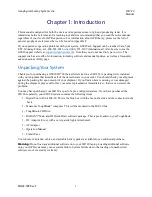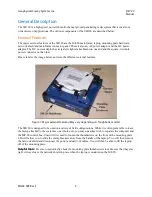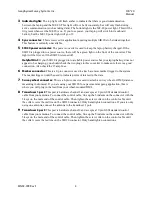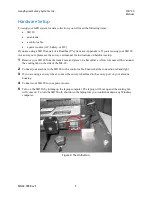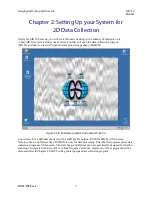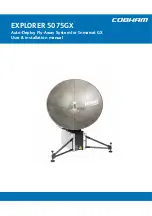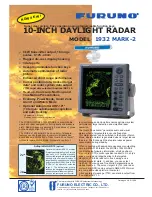
Geophysical Survey Systems, Inc.
SIR® 20
Manual
MN92-078 Rev F
14
7
Scans/ft(m):
This is the number of scans per distance unit that you are collecting. If you are using a
survey wheel, then this is the actual number of scans per distance along your profile. This number
should be set as high as practical. The higher the number of scans per unit distance, the larger the data
file size and the slower the data collection speed. If you are collecting free run data, then this number
is for note taking purposes only. If you are collecting survey wheel data and any horizontal filters
and/or static stacking filters are enabled, the filter value will affect the number of scans per unit
distance collected. For example, if you set the scans/ft to 20 and you have a stacking filter set to stack
4 scans, the output file will have 5 scans per foot (20/4), not 20 scans/ft.
8
Ft(m)/Mark:
When used in the Survey Wheel mode, the SIR 20 will put a mark into the data at user
specified intervals. A mark is a small vertical line that is superimposed over your data window and is
intended to allow you to easily ‘eyeball’ distance across your profile. The value selected is a matter of
personal preference.
9
Auto Gain Level:
Typically set to 0.5. This controls the SIR 20 auto gain servos. When you initialize
the antenna, the SIR 20 runs an algorithm on the received signal and decides how much gain
amplification to apply to the signal. The auto gain level defines how strong the gained signal should
be relative to the recordable dynamic range (+/-32767 for 16-bit data). A value of 0.5 means that the
strongest gained sample in any given gain segment will be 50% of the total dynamic range. If you
believe that you have targets or reflectors with highly variable amplitude and are afraid of clipping,
than you should set this value to 0.25 so that there is ‘more headspace’ in the dynamic range to record
sudden large changes in signal amplitudes.
10
Transmit Rate/Channel Selector:
This allows you to set different transmit frequencies for your
antennas. The correct transmit rates can be found in the antenna parameter section at the back of this
manual. Typical transmit rates for GSSI 51XX series antennas are 100 KHz. Older or lower
frequency antennas may have to be set lower. You can also change the channels that those antennas
are run on. For example, if you have two antennas and would like to transmit on one and receive on
the other, then you can enter these parameters here.
11
Antenna Calibration File:
This option is used exclusively for RoadScan work with high frequency
horn antennas. Consult the RoadScan application manual for details.
12
SIRveyor:
This is a representation of the connectors on the back of the SIR 20. This allows you to
visually double check that you have the correct antenna plugged into the correct channel port.
Содержание SIR 20
Страница 1: ......
Страница 4: ......
Страница 6: ......
Страница 12: ...Geophysical Survey Systems Inc SIR 20 Manual MN92 078 Rev F 6 ...
Страница 56: ...Geophysical Survey Systems Inc SIR 20 Manual MN92 078 Rev F 50 ...
Страница 67: ...Geophysical Survey Systems Inc SIR 20 Manual MN92 078 Rev F 61 Figure 65 Migration Comparisons ...
Страница 88: ...Geophysical Survey Systems Inc SIR 20 Manual MN92 078 Rev F 82 ...
Страница 96: ...Geophysical Survey Systems Inc SIR 20 Manual MN92 078 Rev F 90 ...


